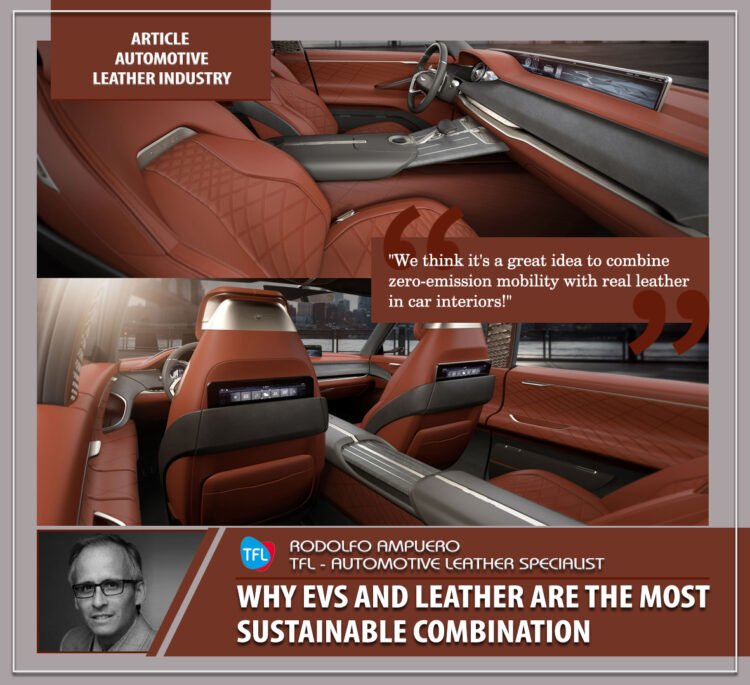Rodolfo Ampuero
TFL
Automotive leather specialist
Why EVs And Leather Are The Most Sustainable Combination
The climate crisis is hard to ignore. Sustainability is an urgent focus for car manufacturers and the shift to electrification is irreversible. OEMs are making the development of “low carbon” cars a key strategic priority and are investing heavily in R&D. In addition to the shift from internal combustion engines (ICE) to electric vehicles (EV), reducing the weight of cars has a strong impact on reducing emissions.
A 10% reduction in vehicle weight reduces fuel consumption by 5.6% for passenger cars and 6.3% for commercial vehicles. In the case of electric vehicles, a 10% reduction in weight increases battery autonomy by 13.7%.
From a commercial point of view, many OEMs have relied on key components – engine, transmission and chassis – to differentiate their ICE vehicles, but in the EV era it is becoming more difficult to create differentiated mechanical specifications. For premium EVs, OEMs should strive for differentiation to attract consumer attention and develop their brand image, for example by offering EVs with smart features and a low carbon footprint. They could also differentiate by improving the overall customer experience by offering genuine leather in their vehicle interiors.
We understand that in recent years, many “eco” alternatives have been offered to replace leather. Many of these falsely claim to be sustainable. Recently, with the use of these materials over time, there have been serious customer complaints and slowly consumers are becoming more aware of vegan materials and the benefits of leather.
In addition to its durability, leather technology has been able to meet automotive lightweighting requirements, enhancing leather’s value as a biodegradable material and in many cases, depending on the process, it can be declared compostable, fulfilling the circular economy in the life cycle.
Whatever alternative mobility is chosen to be carbon neutral, in the coming decades cars will become increasingly autonomous, drawing the driver’s attention to the interior of the car and turning it into a living room on wheels. Leather will play an important role in this, providing the comfort and warmth of a second home.
The leather industry is constantly evolving to meet low emission standards and we see no argument against combining zero-emission mobility with real leather in car interiors.
Source:









